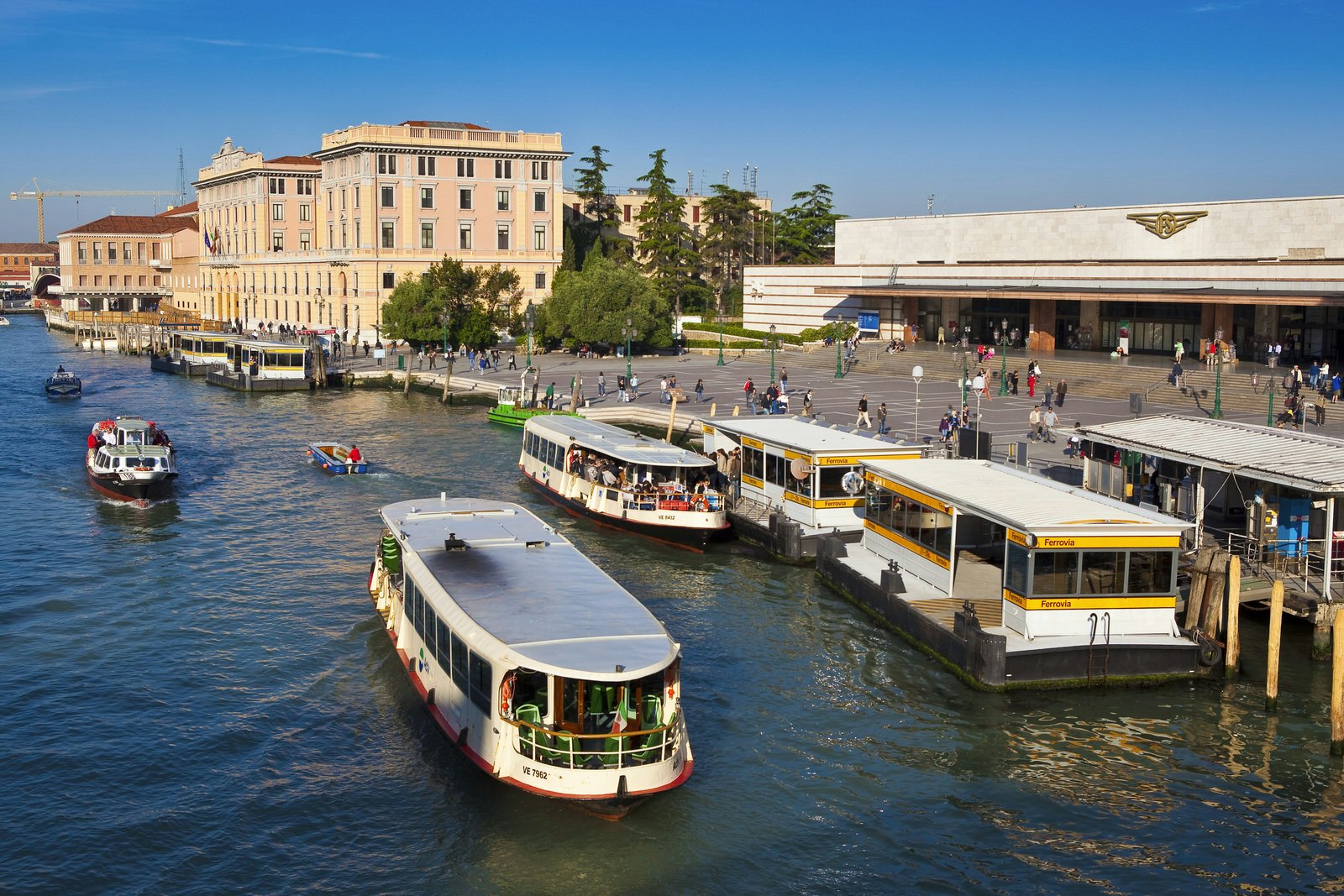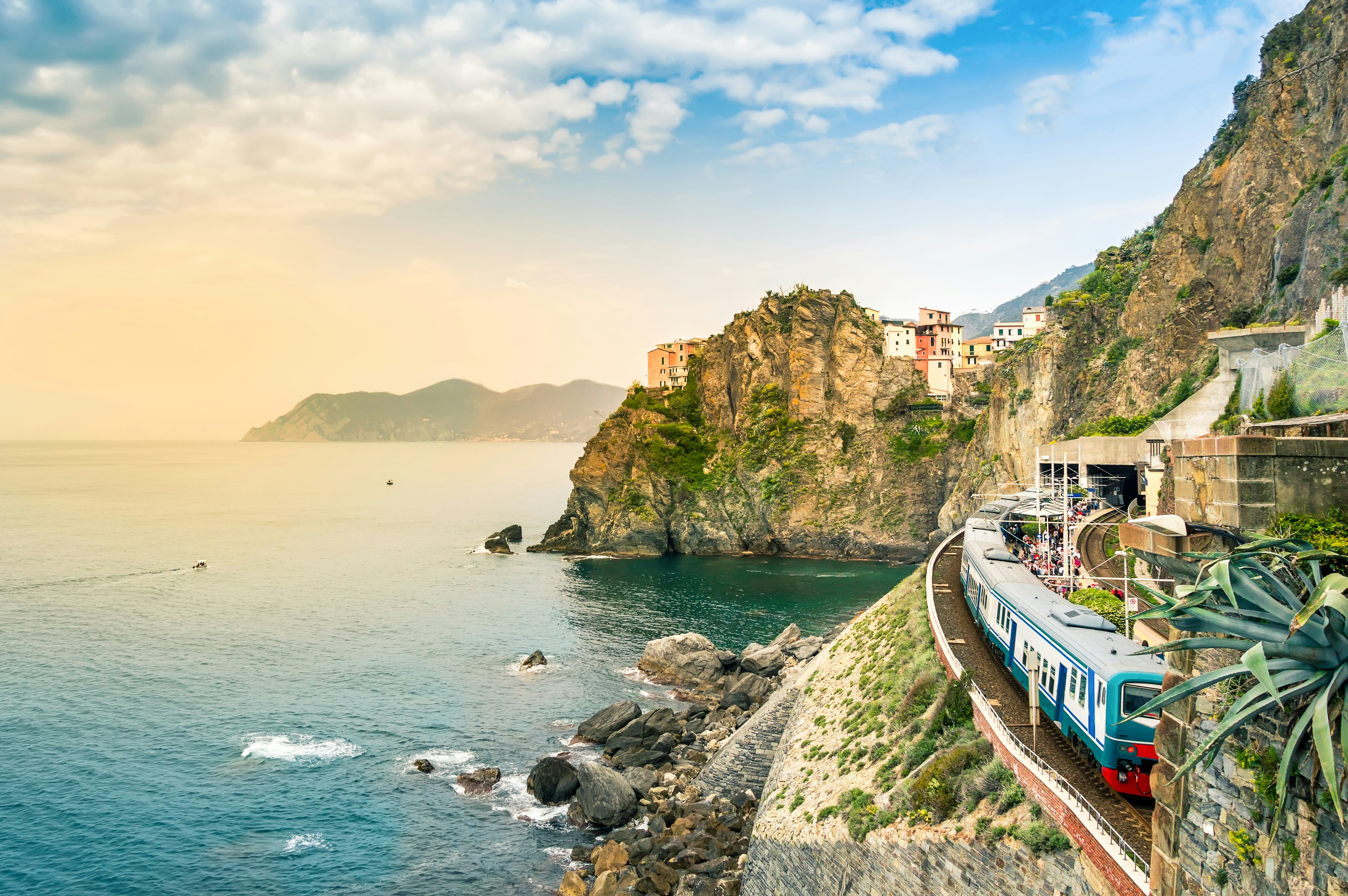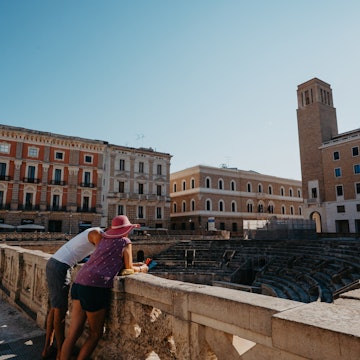
Traveling by train in Italy: everything you need to know

Jan 26, 2025 • 11 min read

Plan your train travels in Italy with our guide to routes, tickets and services. Justin Foulkes for Lonely Planet
Italy is one of the most rail-friendly countries in the world with swift, comfortable and economic trains penetrating almost every corner of the bel paese (beautiful country).
Well-known for producing supersonic Ferraris and Lamborghinis, the Italians have also conceived some of Europe’s fastest trains. The bullet-like Frecce locomotives come in three different categories headed up by the high-velocity Frecciarossa 1000, which has a top cruising speed of 300km/h (186mph).
For those not in a hurry, one of Italy’s finest pleasures is chugging along a sun-dappled Mediterranean coastline on a medium-paced treno regionale (regional train) watching terraced hillsides, umbrella-lined beaches and pastel-colored towns float by.
Does Italy have good trains?
If you thought Ferraris were fast, you’ve clearly never traveled on a Frecciarossa 1000, Italy’s arrow-headed high-velocity trains that reach a top cruising speed of 300km/h (186 mph). These streamlined rockets-on-wheels are not only faster than Italian sports cars, they’re also invitingly comfortable with leather seats, a complimentary glass of prosecco (in business and executive classes) and a pleasant on-board cafe where the view changes every few seconds.
Most Italian trains are operated by state-run subsidiary, Trenitalia, founded in its modern form in 2000. Trenitalia controls the lion’s share of the country’s rolling stock, presiding over a complex spiderweb of lines (over 16,000km/9940-miles worth) that penetrates all 20 of the country’s regions. Supplementing Trenitalia are a handful of shorter, privately-run railways used mostly for tourist purposes.
Under the Trenitalia umbrella, there are three main train categories:
Regionale: The slowest and cheapest trains that generally stop at all or most stations
Intercity (IC): Fast services that operate between major hubs while the Intercity Notte provides overnight services between the north and the south of the country, heading as far south as Syracuse in Sicily and Lecce in Puglia. Intercity Notte (overnight) trains offer one-, two- and three-berth sleepers or four-berth couchettes.
Alta Velocità (AV): Namely the Frecciarossa, Frecciargento, Frecciabianca models that connect major cities reaching speeds of 300km/h, 250km/h and 200km/h (186/155/124 mph) respectively.
Providing a bit of healthy competition is privately-run Italo operated by NTV (Nuovo Trasporto Viaggitori). There are two types of Italo trains, AGVs and EVOs, roughly akin to Trenitalia’s Frecciarossa and Frecciargento models in terms of speed and service.
Competition between Frecce (AV) and Italo trains has kept standards high and prices low. Frecciarossas have on-board cafes and four different classes, while Italo trains have a slightly more deluxe decor. And all are faster than driving, especially when you factor in traffic and parking.

Can I get everywhere in Italy by train?
There are few sizable towns in Italy that you can’t reach by train. High-speed Italo trains run between the major hubs of Turin, Milan, Bologna, Florence, Rome, Naples and Salerno. There are additional connections to Brescia, Verona and Venice in the north.
Frecce (AV) trains cover a similar network but stretch further south to Reggio Calabria. Another east-coast line serves Ancora, Pescara, Bari and Lecce. High-speed trains have reduced the journey time between Rome and Naples to just over an hour and Rome and Milan to just under three with trains departing every 30 minutes.
Intercity and regional trains cover the rest of the country, including Sicily and Sardinia. All trains, from AVs down to regionales, are kept in a good state of repair with new rolling stock – including double-decker carriages – introduced every few years.
For convenience, cost and sustainability, Italian trains nearly always trump cars and serve some of Italy’s most remote regions. Notable areas without train coverage are the Amalfi Coast, parts of rural Calabria and Basilicata, and much of Sardinia where you’ll need to switch to buses.

Are trains in Italy often late?
Popular legend suggests Mussolini made Italy’s trains run on time. But, while Il Duce may have modernized the nation’s archaic rail system and built a few grand stations, he never really snuffed out railway tardiness. Nowadays, while Italian trains are rarely inordinately late, 10- to 20-minute delays are not uncommon (especially on regional trains), which can cause problems if you have a tight connection. It’s always best to book a direct train to your destination, if possible.
Another bane of Italian rail travelers’ lives is the random one-day scioperi (strikes), part of Italian culture that can bring public transportation to a virtual standstill. Upcoming industrial action is usually published several days in advance.
Do I need to validate my ticket?
Regional train tickets that aren’t dated must be time-stamped in green and grey convalida machines located in the stations before boarding the train. Ticket inspectors can fine people traveling with an un-validated ticket (around €50 if you pay on the spot). Although pleas of being an ignorant tourist sometimes work, it’s generally not worth the risk.
Tickets for AV and Intercity trains don’t require validation, as they can only be used on the specific service they are valid for.
Can I sit anywhere on a train in Italy?
Ticket prices vary according to the type of train, class of service, time of travel and how far in advance you book. The fancier and pricier Frecciarossa trains have four classes: standard, premium, business, and executive with prices increasing on an upward scale: 25% for premium, 60% for business, and 100% for executive. Italo has three classes: smart, prima and club, with similar price categories to Frecciarossas.
Other Trenitalia trains have first- and second-class seating with a first-class ticket typically costing from a third to half more than second-class.
Tickets on Frecce/Italo trains and Intercity services can be booked up to four months in advance although, thanks to the frequency of trains, they rarely sell out. Reserve online at Trenitalia and Italo or in person at a station. You’ll be assigned a specific seat when booking.
Regionale trains, which stop at nearly every station, don’t require reservations. Just pay for your ticket before departure, jump on the train and grab a seat wherever you like.
Multilingual ticket machines (called biglietto veloce) exist at all Italian train stations and are easy to use. They accept both cash and credit cards. Large stations also have ticket clerks during office hours. It pays to book ahead on AV trains with savings of up to 50% available on some routes if you’re sure about your travel plans – there are no refunds.
While trains can get busy, especially on popular routes and during summer vacations, there are plenty of them and you’ll rarely have a problem finding a space.

Should I get an InterRail or Eurail pass for Italy?
Trenitalia offers various discount passes, including the Carta Verde (€40, for 12- to 26-year-olds) and Carta d'Argento (€30, for over-60s), but these are mainly useful for residents or long-term visitors, as they only pay for themselves with regular use over an extended period.
More interesting for short-term visitors are the Eurail and InterRail passes. InterRail passes, available online and at most major stations, are for people who have been a resident in Europe for more than six months. A “Global Pass” encompassing 33 countries including Italy comes in 10 versions, ranging from three days' travel within a one-month period to three months’ unlimited travel. There are four price categories: youth (12 to 27), adult (28 to 59), senior (60+) and child (4 to 11), with different prices for first- and second-class. Neither InterRail or Eurail passes are valid on Italo trains.
A separate InterRail one-country “Italy Pass” can be used for three to eight days in one month. The Italy Pass doesn't cover reservations, which are required on all Italian trains except for slow regionales. Note: Trenitalia sells a similar pass valid only for AV and Intercity trains (not regionales). You select a given number of journeys within a specific timeframe. The pass comes in youth, adult and senior versions.
Eurail and InterRail passes don’t necessarily save you money in Italy, because you must still pay a reservation fee of €13 for high-speed trains, and tickets for regular trains aren't expensive. It’s often cheaper to purchase separate tickets for each journey. Trenitalia passes are cheaper than pay-on-the-day tickets, but are usually less economical than buying tickets several weeks in advance.
If budget is more of a concern than speed, or you want to get to smaller towns and villages, you’ll probably find yourself traveling on regionale trains, which are surprisingly cheap and stop at all stations. The regionales’ carriages aren’t as opulent as AVs, but they’re perfectly comfortable and handy for those on a tight vacation budget.
Can I arrive in Italy by train?
Some of Italy’s finest train journeys cross its international borders with its neighbors to the north. The Brenner Pass route that links Munich with Venice over the Alps is sometimes touted as the finest train ride in Europe, while the Euronight overnight train between Rome and Vienna with two-bed sleepers (from €100) is a fun option if you’re experiencing a sleeper train for the first time.
If you’ve got over €3000 to blow and want to imagine you’re living in a Graham Greene novel or an Agatha Christie whodunit, take the Venice Simplon Orient-Express from London (or Paris) to La Serenissima. This luxury art deco hotel on wheels runs roughly once a week between March and November and was seemingly invented with romance in mind.
Since 2021, Frecciarossa trains have provided rapid service between Milan, Turin and Paris. By using a mixture of Eurostar and Frecciarossa and with some forward booking for the best prices, it’s possible to travel between Milan and London in one day for a cost of around €85 (or Paris for as little as €30) and you get to see magnificent alpine scenery in the bargain.
Can I take my luggage on the train in Italy?
There is no big issue with luggage and no luggage charges or baggage cars. Bring whatever you can carry and store it on board. Assembled bikes can be taken on regionale and Intercity trains for a €3.50 supplement. Disassembled bikes can be carried on AV trains free of charge.
Carriages are usually open-plan with plenty of legroom and ample luggage racks. Tables - either pull-down or shared – are available with most seats. In executive class on Frecciarossa trains, you can expect revolving leather seats, cold meal trays, a meeting room, and a bottle of prosecco delivered to your table.
The upshot: train travel in Italy is way (way!) more comfortable than flying and around 80% more sustainable.

Are train stations easy to get to?
Italy’s train stations inhabit a sliding scale that starts with Rome’s massive Stazione Termini, a mini-city with bookshops, bars and restaurants, and filters down to the kind of single-platform middle-of-nowhere stations that walkers stagger into at the end of lengthy hikes.
Most reasonably sized towns will have a centrally located station with a bar where you can grab at least a caffè (coffee) and a panino, along with slightly iffy toilets (some of which have attendants keeping things in order, but they also charge you €1).
Stations in large cities like Naples, Milan and Florence are seldom more than a kilometer from the city center. Venice’s Santa Lucia station abuts the Grand Canal. Many Italian airports are sited directly on train lines including Rome Fiumicino and Milan Malpensa. The airports that do not have a train station invariably have a tram or bus connection to a nearby station.
Note: some cities have more than one train station. Turin and Genoa have two; Rome has four, the most central being Termini (the others are Tiburtina, Ostiense and Trastevere).
Can I buy food on the train?
Restaurant cars have been phased out on Italian trains and even food trolleys are becoming rare. Frecciarossa trains still have a staffed bar/cafe, euphemistically called the Freccia Bistrò. In Executive and business class you’ll get a food box delivered to your seat. Italo trains and Trenitalia regionale and Intercity trains only have vending machines.
Are there phone charging points and toilets?
Almost all Italian trains, including regionales have charging points for phones and laptops (although they don’t always work). Freccia and Italo trains also offer free wi-fi.
Most Italian trains have at least two well-maintained toilets that are a lot more spacious than airplane bathrooms. Bring toilet roll and hand sanitizer, just in case they're not provided.

What are the most scenic train routes in Italy?
The speed of Frecce trains means that the scenery is often rendered a blur. For Italy’s most spectacular rail journeys, you’ll have to seek out small private lines or Trenitalia’s regional routes and abandon any stringent time constraints.
Here are five of the best journeys:
The epic Vigezzina line (or Centovalli, as it’s called in Switzerland) starts in Domodossola in Piedmont and travels across 83 bridges in two hours of condensed alpine splendor to terminate in Locarno in Switzerland.
Sardinia’s intentionally slow Trenino Verde, upgraded in the 1990s, runs four summer-only tourist trains along narrow-gauge track through some of the island’s most remote enclaves.
The narrow-gauge Ferrovia Circumetnea rattles out of Catania in Sicily almost circumnavigating Mt Etna on a diminutive locomotive that looks more like a trolleybus than a train. En route it crosses lemon groves and lava flows, stopping at remote stations every five minutes.
Jump on any Trenitalia regionale train along the Levante Riviera between La Spezia and Genoa and enjoy flashes of sun-lounging hedonists, cliffside villages and the turquoise Mediterranean as you dash in and out of the short tunnels that burrow through the coastal escarpment.
Part of the Neapolitan metro railway, the heavily used Circumvesuviana between Naples and Sorrento ferries tourists to the archaeological sites of Herculaneum and Pompeii, unveiling views of Mt Vesuvius and the Bay of Naples along the way.
Are trains in Italy good for travelers with additional needs?
All AV trains have clearly marked carriages with two designated wheelchair seats, plus space for a companion. The carriages are also equipped with large accessible toilets. There is extensive braille signage in Italian stations along with ramps for wheelchairs. Special Sala Blu offices adorn 15 Italian stations offering free help to everyone from wheelchair users, to the visually impaired, to pregnant women. Sala Blu equipped stations include Milan, Venice, Turin, Rome and Naples.















